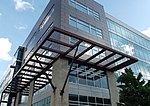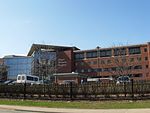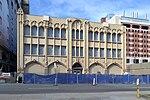Entertainment Technology Center
1999 establishments in PennsylvaniaEducational institutions established in 1999Schools and departments of Carnegie Mellon

The Entertainment Technology Center (ETC) is a department at Carnegie Mellon University in Pittsburgh, Pennsylvania, United States. It is located at the Pittsburgh Technology Center. The ETC offers a two-year Masters of Entertainment Technology (MET) degree, jointly conferred by Carnegie Mellon University's College of Fine Arts and School of Computer Science. Students enrolled in the ETC learn interdisciplinary skills in design, art and technology, and are prepared for environments where artists and technologists work hand-in-hand, such as theme parks, interactive museum exhibits, website design and development, and the creation of video games.
Excerpt from the Wikipedia article Entertainment Technology Center (License: CC BY-SA 3.0, Authors, Images).Entertainment Technology Center
Technology Drive, Pittsburgh
Geographical coordinates (GPS) Address Nearby Places Show on map
Geographical coordinates (GPS)
| Latitude | Longitude |
|---|---|
| N 40.43184 ° | E -79.96192 ° |
Address
De Fer Coffee & Tea
Technology Drive
15261 Pittsburgh
Pennsylvania, United States
Open on Google Maps









